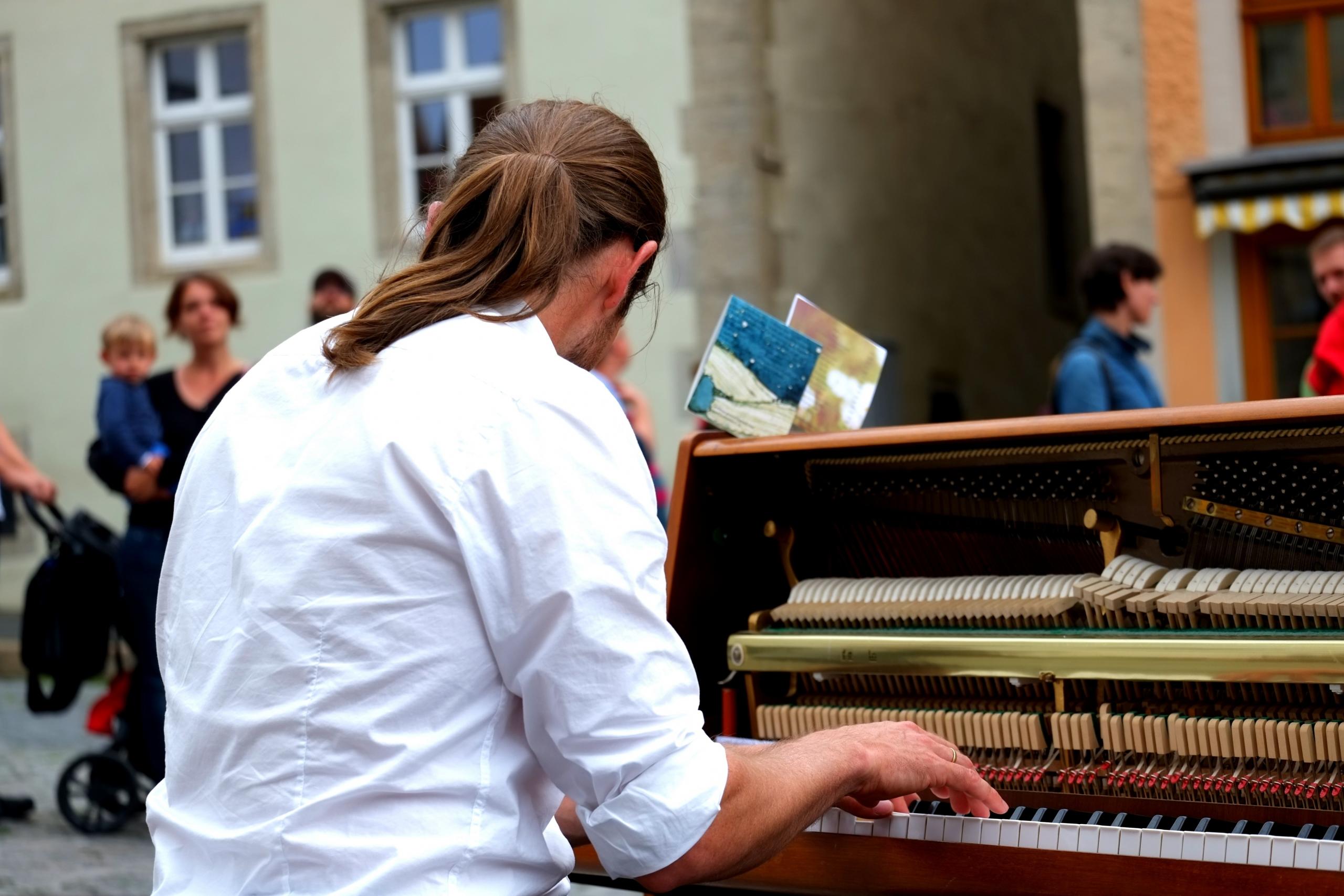Just as you can’t take playing the piano lightly, you have to take buying a new piano or used piano seriously whether it’s before, during, or even after learning to play it.
There are lots of piano brands. Do you know the difference between a Kawai piano and a Steinway & Sons piano? Could you even tell me where your nearest piano dealer is? If not, don't worry. Superprof is here to help!
When it comes to pricing there are various factors to consider. The first and most significant one is the type of piano. Acoustic pianos like uprights and grants generally come with a larger price tag compared to their counterparts.
The brand and reputation of the manufacturer also play a role in determining the cost. Established piano makers with a strong tradition and exceptional craftsmanship often command higher prices.
Another important factor is size. Grand pianos, known for their sound and elegant presence tend to be more expensive than pianos. The materials used in construction, such as high-quality wood and specific types of strings, can also impact pricing. Lastly, age and condition are variables that can greatly influence cost.
One thing that you should note is that buying this kind of musical instrument is an investment. A long-term investment.
While you can always consider how much money and how much time you’ll need to invest, the decision isn’t always that simple.
Let’s reconsider the main question. “How much does a piano cost?”
In this case, we don't just mean money: we're going to consider every expenditure. Sure, considering all the elements as “costs” may seem a bit negative, but you’ll soon see that this isn’t really the case.
Find out how the piano is a complete instrument in itself.
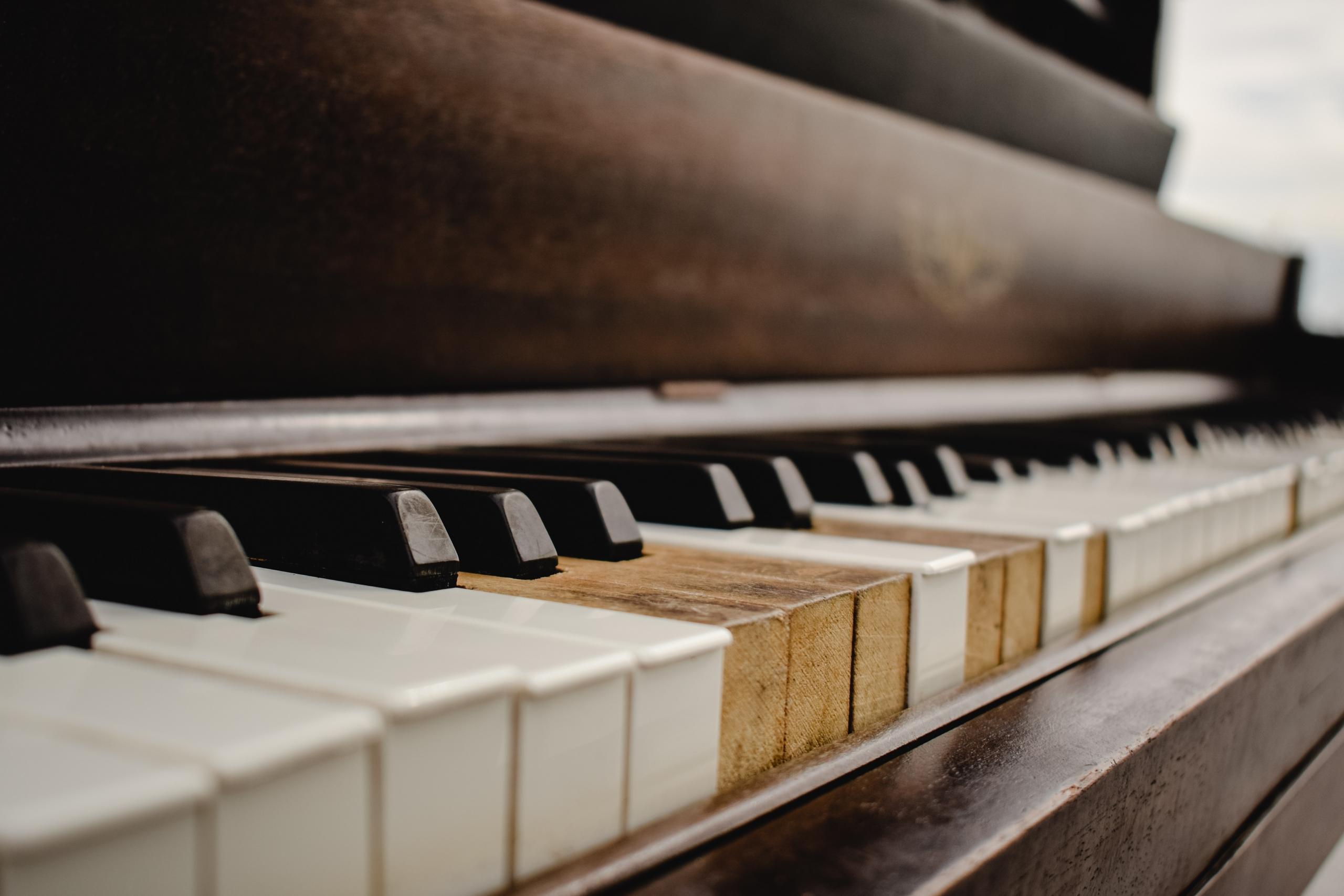

Electric Pianos: How Much Should I Expect to Pay?
| Summary |
|---|
| Pianos come with a cost, and the price varies based on type, brand and the quality. |
| Electric pianos, also known as keyboards, offer advantages like headphone use and volume control for beginners. |
| Electric pianos come in a wide range of prices and quality levels. |
| Entry-level electric keyboard piano bundles start at around €120 and are suitable for beginners. |
| Mid-range options from recognized brands range from one hundred to four hundred euros and offer acoustic piano-like key action and sound. |
| High-end electric pianos replicate acoustic piano sound and feel but come at a price range between a thousand to five thousand euros. |
| Three model examples include the budget RockJam RJ661 (€50), mid-range Yamaha P-45 Stage Piano Bundle (€520), and high-end Casio AP-270 (€799). |
| Additional costs to consider include piano moving, piano lessons, piano tuners, upkeep, sheet music, and more. |
We can’t avoid it. Pianos cost money! If you want to buy a piano, you'll have to spend some money. There's not a single piano company that'll build one for you for free.
The price of a piano depends on what type of piano you’re looking at. However, if you want to learn how to play any type of piano, you’re going to have to open your wallet and get your money out!
If you’re just starting out, it’s recommended that you get a generic and versatile electronic or digital piano. Whilst these are not necessarily cheaper, the models people usually plump for are of a slighter cost than the acoustic instruments.
Some Benefits to Going Electronic
And, usually, these instruments come with some benefits that aren't available to the acoustic player.
- If you are just starting out on a piano, electric instruments allow you to plug headphones in. This allows you to practice by yourself without annoying your family or neighbours with your scales and your pieces full of mistakes.
- They also have the option of being turned down - for precisely the same reason.
- An electric piano is usually smaller than its acoustic cousin, meaning it might more easily fit into your lounge or bedroom.
- The electronic keyboard may come with different sound effects, backing tracks, and an in-built metronome.
A Little Clarification
You might see people say 'electric piano' and others say 'keyboard'. They might sound like the same thing. But are they? No, not really - hence the need for clarification.
An electric piano is specifically designed to replicate the sound of an acoustic piano - but with the benefits that electric amplification brings (volume, size, price).
A keyboard, however, is something that looks a little like a piano, but has many different sound options available: they can emulate different instruments, etc.
At the lower end of the electric piano scale, budget-wise, these are often interchangeable. As you get more experienced, the more specialised the instruments become. Experienced players require different and more specific things from their instruments. Budget instruments, on the other hand, aim for versatility, to please the widest range of beginners possible.
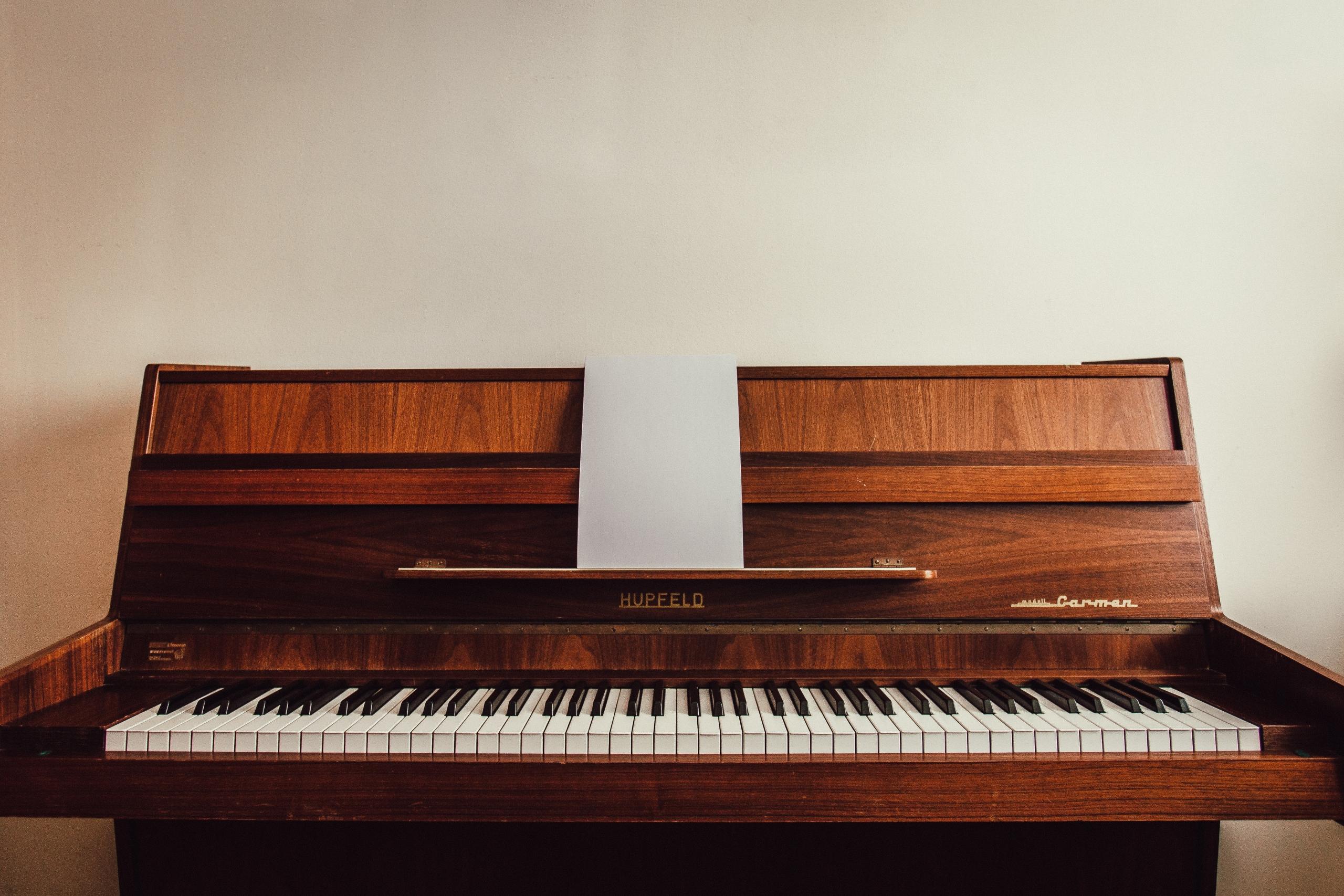
So, How Much Will It Cost Me?
When it comes to pricing, inevitably you get what you pay for - and you can pay literally anything for an electronic piano.
Entry-level electric keyboard piano bundles start from as little as €120 - from sites such as Argos or Amazon. Whilst these aren't going to be the best keyboard you are ever going to play, those who are not yet fully committed to piano playing might find them great options to start off with. They often come in starter packs that include headphones, a keyboard stand, a music stand, and a stool, so you don't have to mess about getting all the other things you need to get going.
If you want something a little more robust, you can go for a more credible beginner option from a recognisable brand (you can see more on this below).
These will set you back by between one hundred and four hundred quid. But the benefits of these are substantial: they will be set up to mimic the effect of acoustic pianos - in the weight of their keys and in their sound - and they will not be at such a risk of technical faults. But you'll also have the added benefit of not having to pay for piano moving or for a piano technician.
At the high end, you will find models designed to replicate the acoustic piano sound almost identically. They will have properly weighted keys so it feels like you are playing an acoustic piano too.
This combination of sound and feel is what primarily determines the price of an electric piano. But they will also come with different features, including USB ports, portability, and recording features. For these, you are looking at between a thousand pounds and five thousand. Honestly, not recommended for the beginner.
Let's Have a Look at Some Models.
Here are three models, from each price range, to give you a sense of what's involved.
Budget: RockJam RJ661 - €50
The RockJam RJ661 has sixty-one keys (a full-size piano has eighty-eight), which is designed to make it compact and manageable for the beginner. This model comes with a stool, a stand, and headphones - and there are over a hundred different sounds, backing tracks, and demo songs to play with. At €50 it is a popular beginner option.
Mid-Range: Yamaha P-45 Stage Piano Bundle - €520
At the higher end of the mid-range is the Yamaha P-45, which has the full eighty-eight keys and a much more sophisticated sound engine - designed to really sound like you are playing the real thing. On an acoustic piano, the bass keys are heavier (as the strings that the hammers strike are thicker), and this model replicates that effect. Why does that matter? Because your technique will improve by playing on an authentic-feeling instrument. This is €520 - perfect for the committed amateur.
High End: Casio AP-270 - €799
This electric piano is from a really reliable piano brand, the AP-270 is truly a great instrument for anyone who covets a traditional piano, but realises that it’s simply impractical to have one. It reproduces classic grand piano sounds across the range from soft, delicate tones to strong, powerful tones, depending on the weight of the keystrokes. €799 makes this piano perfect for those seeking a more professional sound.
It would be a good idea to know how big a piano is before buying one...
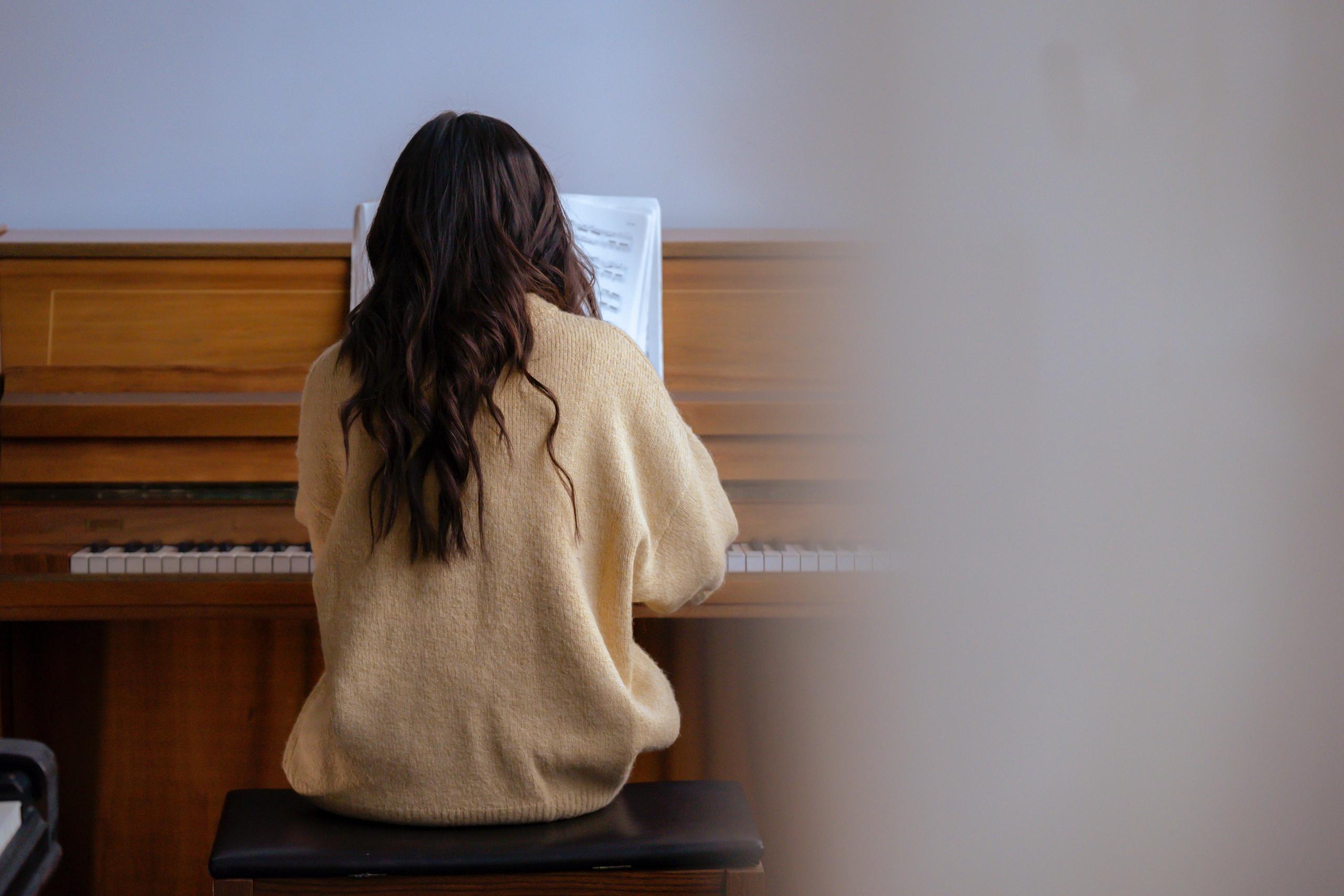
Acoustic Pianos: How Much Will it Cost Me?
| Summary |
|---|
| All kinds of acoustic pianos, both upright and grand, can be costly for beginners. |
| Benefits of acoustic pianos include their visual appeal, superior sound quality, and suitability for serious musicians. |
| Upright pianos come in different sizes, with full-size uprights having a range similar to baby grand pianos. |
| The cost of acoustic pianos varies based on type, size, and brand, with starting prices in the thousands. |
| Entry-level options include the Yamaha B1 Upright Acoustic (€3,629) and the Yamaha GB1K Grand Piano (€11,990). |
| Additional costs to consider when buying a piano include piano movers, piano lessons, piano tuners, sheet music, piano covers, and more. |
It's not worth beating about the bush - buying an upright or grand piano when you’re just starting out seems highly ambitious. So, if you're thinking about buying your very first piano, buying an upright or a grand probably isn't an option to consider.
Nonetheless, let's have a look at what they are all about.
The Benefits of the Acoustic
If they are so expensive, why would anyone bother buying an acoustic piano? Here are some of the benefits.
- They look absolutely gorgeous. Honestly, many people (who have too much money to spare) buy acoustic pianos just because they are a great piece of furniture. They look beautiful and give your home a real 'wow' effect.
- For actual pianists, an acoustic sounds great. No electric piano can fully replicate the depth of sound, the natural volume, or the tone of an acoustic. If you are committed to making beautiful music on your piano keyboard, there isn't really any competition.
- If you are a serious musician, with ambitions to play in concert halls, you don't really have a choice. Most theatres are equipped with a grand piano, so you will need to practice with an instrument that feels like your performance instrument.
Some Different Types of Acoustic Piano
If you are after an acoustic piano, you are going to have to decide which type of acoustic you are going to get.
Upright Pianos
Upright pianos come in different sizes, and each different dimension has a different name. So, if you are after a particularly small one, get a spinet piano (although these are often not the best quality instruments on the market).
Consoles are the next biggest, and they come with a massive boost in quality from the spinet - and they are not too much more expensive.
Studios and full-size uprights are at the top of the scale. Full-size ones have pretty much the range of a baby grand piano - but without taking up all that extra room.
Grand Pianos
If a baby grand is about five feet, a concert grand can reach over ten feet. This makes the latter a little tricky to have in your home - let alone pricey as hell.
So, How Much Will It Cost?
Starting prices for upright pianos start in the thousands - and a baby grand will start at about three times the average upright. As you can see, acoustic pianos are not the sort of things that you should be buying as your first instrument.
For a grand piano, you are looking at probably eight thousand at a minimum. If you are really committed and have the cash to splash, you can pay over one thousand pounds. Maybe this ain't the best idea for your eight-year-old kid to make their first music on. You may as well buy them a small house instead.
It sort of goes without saying that, to get the most out of your piano, you need to make sure it isn’t a financial strain. You need to choose a piano you can afford. The objective is to find the best piano for you, not the piano made by the best piano manufacturers using the richest mahogany.
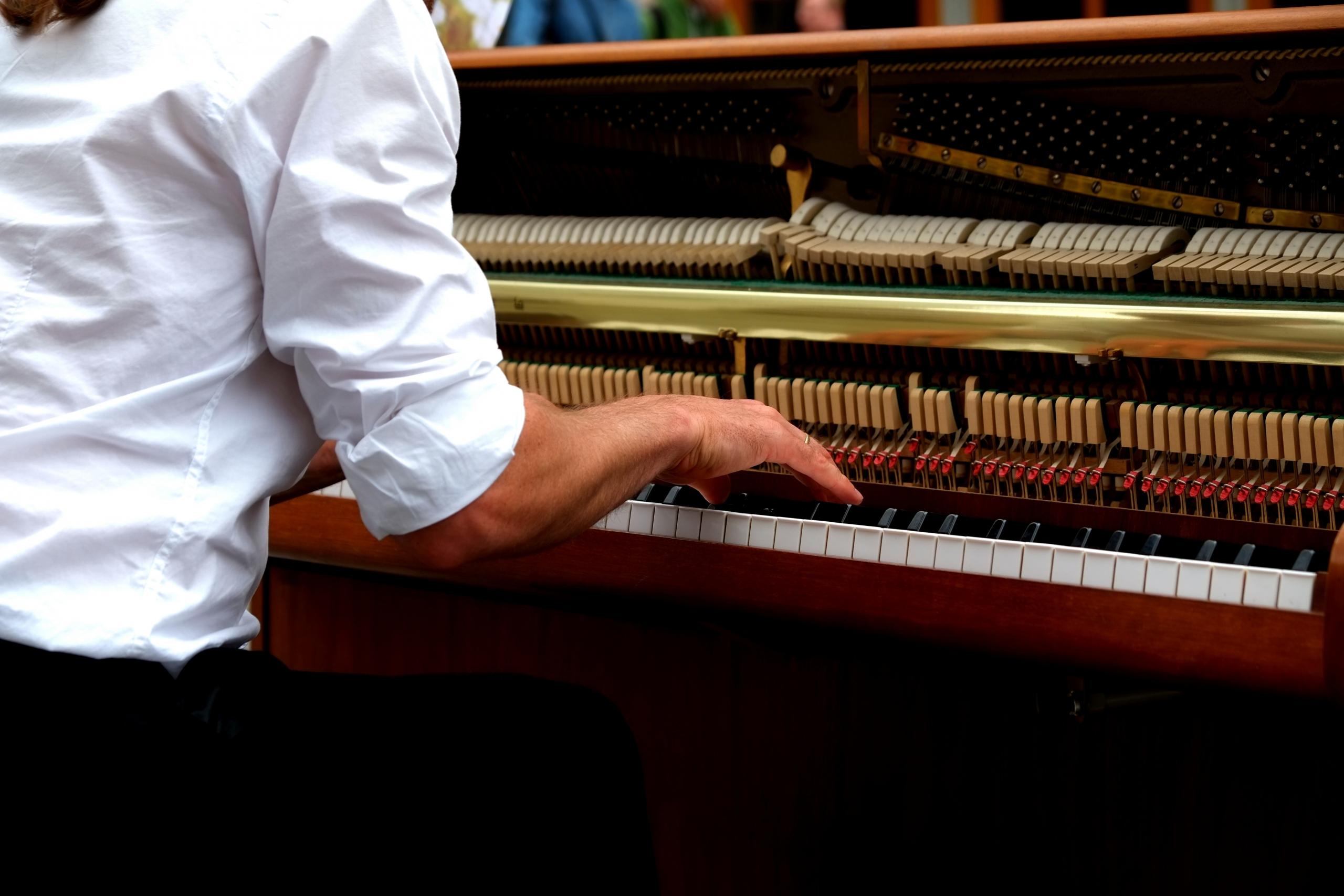
Let's Have a Look at a Where to Start:
Entry Level: Yamaha B1 Upright Acoustic - €3,629
Yamaha is a very reliable brand for pianos - and their pianos are used by amateurs in the home, professionals in the studio, and concert pianists on stage. Knowing this, the Yamaha piano is a great entry-level acoustic instrument - with quality craftsmanship, a high gloss finish, and a great sound. It's the only size of piano that will reasonably fit in a home - and is €3629.
Mid-Range: Yamaha GB1K Grand Piano - €11,990
The elegant and carefully crafted Yamaha baby grand fits into smaller rooms and does not break the bank. The GB1K is Yamaha's smallest 'baby' grand piano at 5'. It is also the best-selling piano in the USA.
Once you move on from these two acoustic pianos you can spend anything from €20,000 to a couple of million.
Additional Costs
When considering the cost of owning a piano it's crucial to take into account the overlooked additional expenses. Regular maintenance and proper upkeep are necessary to keep your piano in its condition. This includes scheduling tunings once or twice a year, as well, as occasional repairs and adjustments.
Once you’ve found the right piano, you need to consider the additional costs and work out a budget:
- If you do buy an acoustic piano, you'll probably need to hire piano movers to get it from the piano store.
-
A piano teacher for piano lessons.
- A piano tuner. You'll probably need a visit from one of these twice a year - and piano tuning by professional tuners often comes with a hefty price tag.
-
Books and sheet music to study.
-
Downloading piano music for a particular piece.
- If you're going for an acoustic, get it a cover, as you'll need to keep the dust away since that can affect the sound.
Learn all about essential piano accessories every pianist must have...
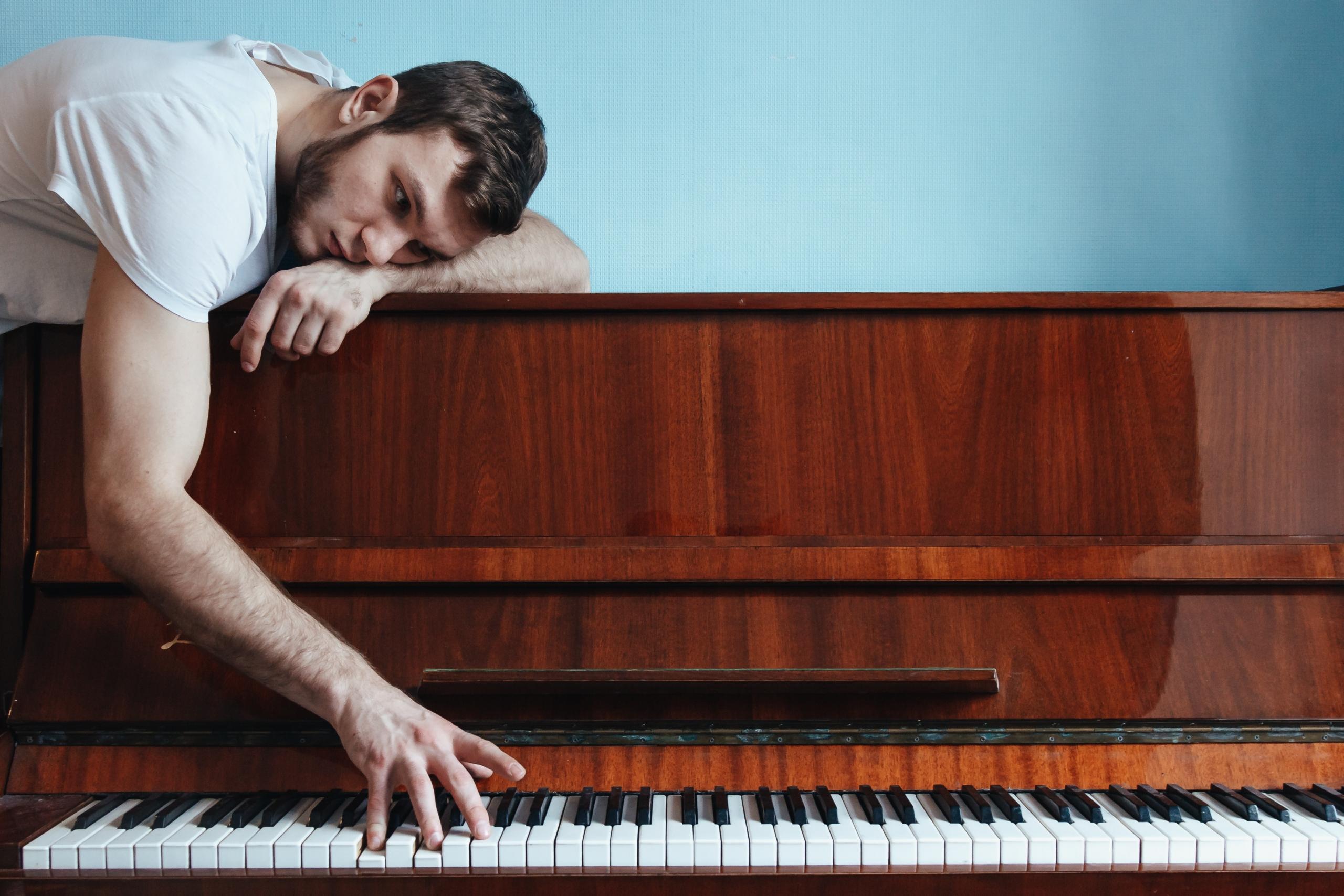

The Cost of a New Piano: What Else Should You Consider?
| Summary |
|---|
| Learning the piano requires a significant time investment. |
| Regular practice is necessary for improvement. |
| A minimum of 15 minutes per practice session is recommended. |
| Piano playing can also be therapeutic and relaxing. |
| Consistent practice leads to noticeable progress. |
| Personal investment is demonstrated through passion and joy. |
| The decision to pursue piano professionally is a significant choice that impacts one's life. |
| Having a backup plan (Plan B) is advisable when making long-term decisions. |
Spending Time on the Piano
Don’t forget that learning how to play the piano can take a significant amount of time.
Of course, saying that it 'costs' time might give you a negative idea of the whole learning experience (which in itself is usually very rewarding).
Let me explain... When I say that learning the piano 'costs' time, I mean that you need to spend time in order to practise.
You can’t just practise whenever you want. If you’re learning to play, you won’t always be sitting down, relaxing, and playing your favourite songs.
While there’s no set amount of time you have to sit down at the piano, you should spend at least 15 minutes playing whenever you do.
This is enough time to play a piece three or four times from start to finish. Or enough time to play four different pieces.
If you only play during your piano lessons, then you know exactly how long you’ll be playing for. Whether it’s 45 minutes or an hour, you can decide this before you have the class. There isn’t really a maximum limit when it comes to classes.
Playing the piano can also be used to unwind. If you’ve had a hard day, sitting down at your piano and forgetting about everything else is a great idea. In this case, it doesn't matter whether it’s for 15 minutes or 45. Your goal here is to leave the piano feeling calm and relaxed. You'll soon see that playing the piano can be really therapeutic.
Follow our advice for buying your first piano...
So how can we measure this personal investment?
Others might notice it even before you do! A pianist who continues to play regularly will progress much more than someone who infrequently plays for long periods of time.
In the same way, a musician who regularly listens to pieces they want to play or often plays in front of their friends and family is personally invested in their new pursuit and will give their all to get better.
The joy of playing is an obvious sign of their investment. It's an investment of energy and passion.
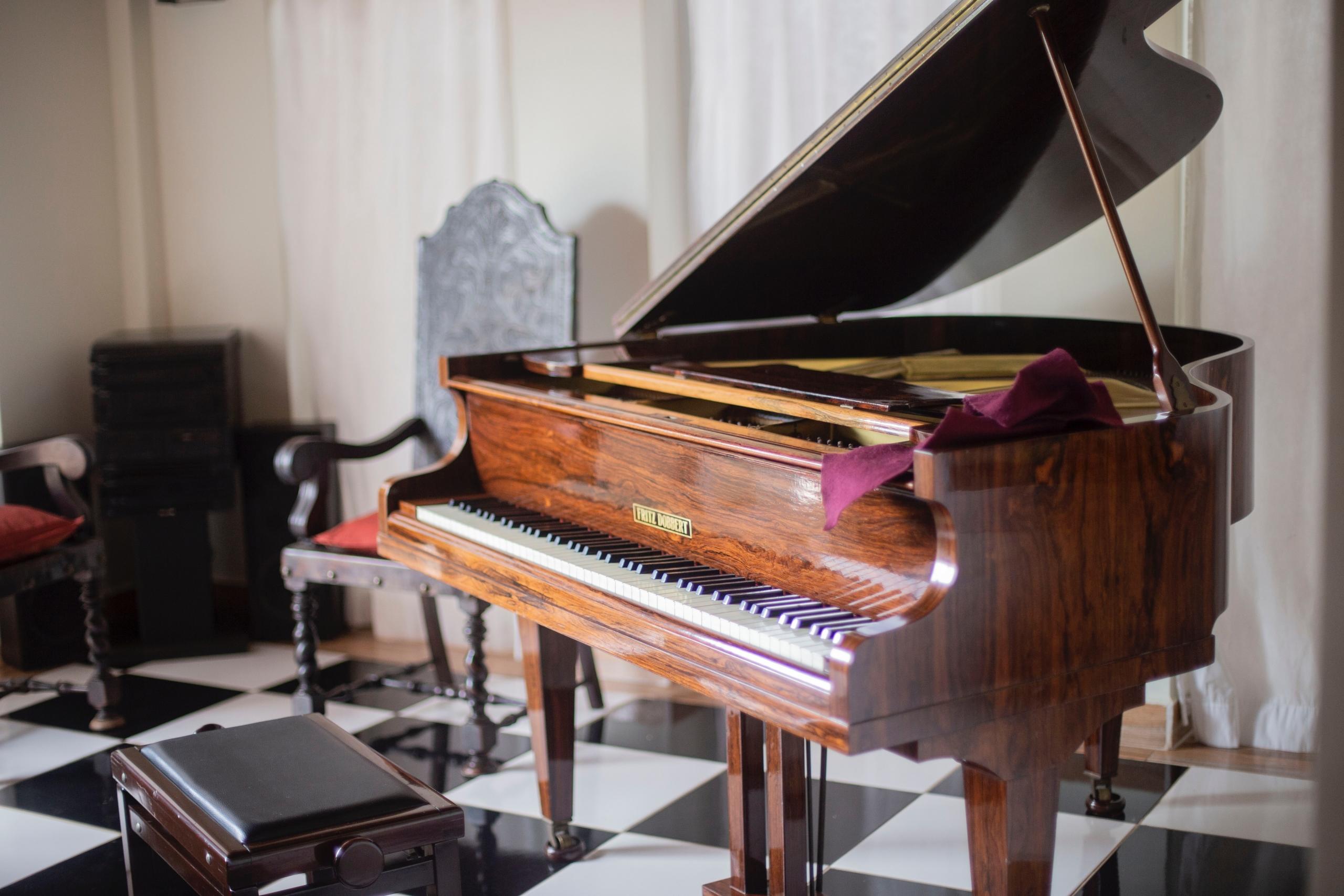
Long-Term Ambition
We never know where learning to play the piano will take us. We don’t ever ask ourselves “Where am I going with this?” until the day comes when we have to answer this question. This choice can be very costly in terms of your short-term and long-term plans for the future. Sometimes the line between an amateur and a professional is very fine.
You’re left with this choice: Am I going to continue practicing this instrument for my own personal pleasure or am I going to risk going professional with it? This choice can be costly.
It’s not the sort of cost you can work out in terms of dollars. Though it is a choice that will greatly impact your life. You have to be aware of the possible outcomes of your decision before you make it. If I can give you one piece of advice, always have a plan B. Keep something up your sleeve in the event it all goes south.
Discover how to select your ideal piano...
Tips to Consider While Buying a Piano
| Summary |
|---|
| Set a budget: Determine your budget, including delivery, tuning, and maintenance costs, and stick to it. |
| Conduct brand and model research: Explore piano brands and models to find the one that suits your needs, considering quality, durability, and resale value. |
| Try before you purchase: Visit a piano showroom to test different pianos, paying attention to how they feel and the quality of sound they produce. |
| Consider used pianos: Used pianos can offer value for money, but have them inspected by a piano technician before buying. |
| Examine second-hand pianos closely: Check every aspect of the piano, particularly the soundboard, keys, and pedals. |
| Be cautious when buying online: If purchasing online, ensure you see the piano in person and be cautious about its condition. |
| Explore second-hand websites and classifieds: Look for "Piano for Sale" ads but examine the instrument thoroughly. |
| Consider piano merchants for used instruments: They offer quality-assured and inspected second-hand pianos. |
Now that you have a grasp of the expenses involved, here are some tips to keep in mind when buying a piano:
- Set a budget; Determine how much you're willing to spend on a piano and stick to that amount. Remember to factor in costs such, as delivery, tuning and maintenance.
- Conduct brand and model research; Explore piano brands and models to find the one that fits your needs and preferences. Consider aspects like quality, durability and resale value.
- Try before you purchase; Visit a piano showroom and try out pianos before making your decision. Pay attention to how they feel when played and the quality of the sound they produce ensuring it meets your expectations.
- Think about used pianos; Used pianos can be great value for money, particularly if they have been well taken care of. With that said, it's essential to have a piano technician inspect the instrument before committing to the purchase.
If you're set on buying an acoustic piano, you might want to check out second-hand pianos. You'll find some pretty good deals.
Make sure that you are careful when you are buying second-hand instruments. Ensure you closely examine every inch of the piano. If you're short on space, you should probably be looking at vertical pianos rather than grands.
Check second-hand websites (like Donedeal) and the classifieds for “Piano for Sale” ads. Just make sure you see the piano you're buying first, the pianos on these websites could be in any condition. Pay particular attention to the soundboard, the keys, and the pedals.
Many piano merchants will sell second-hand instruments too. This might be your best place to look, as they will be quality assured and inspected already for damage. Buying a piano used by a bloke off the internet might not be a great idea if you don't really know much about the instruments.
So is a Piano Really that Costly?
In short, yes. Economically, mentally, and in terms of time.
Whether or not it's worth investing in a high-cost piano depends on your circumstances and goals as a pianist. High-end pianos, like concert grands, provide quality and craftsmanship that can inspire and enhance your playing experience. If you're a pianist or have a passion for the instrument, it may be a worthwhile decision to invest in a high-cost piano.
However, if you're a beginner or play casually, there are options available that can still offer a satisfying playing experience. For example, you could consider purchasing a used piano or opting for a keyboard. These alternatives come with features and technology designed to replicate the sound and touch of a piano while being more budget-friendly.
But don’t forget that playing the piano can be a leisure activity. That means that despite all these “costs”, by weighing up the pros and cons, there are still many good reasons to start practising.
You shouldn’t make your decision until you’ve considered everything and even maybe spoken to the people you know.
Once you’ve taken the plunge, you'll probably forget all about these costs because you’re enjoying playing your piano too much.
That’s what’s important: the joy of learning and playing the piano.
Whether you decide to invest in a brand piano, delve into the realm of pre-owned pianos, or go for a digital keyboard, the sheer delight and satisfaction derived from playing this timeless instrument will unquestionably make it a valuable investment.
Also, discover all you need to know about buying a piano...

